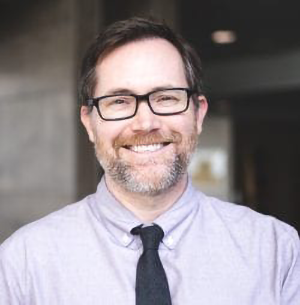New research by Schulich School of Business Professor Gregory Saxton, at York University, suggests that non-profit organizations were more likely to apply for U.S. government aid during pandemic lockdowns – and use that aid to maintain staffing levels – when those organizations had pre-existing, long-term financial obligations to donors.

To help small businesses cover payroll costs and keep employees on the job throughout the COVID-19 pandemic lockdowns, the U.S. federal government created the Paycheck Protection Program (PPP) in April of 2020. The program issued almost 12 million loans worth nearly $800 billion, and these loans were forgivable if the business kept payroll at pre-pandemic levels.
The program had the potential to be especially beneficial to non-profit organizations; however, not all eligible non-profits participated and not all received loan forgiveness. Saxton’s research sought to shine light on why businesses decided to apply, and what motivated certain businesses to meet the requisites for loan forgiveness.
To examine what motivated non-profits’ participation in the program, Saxton, a professor of accounting, and his co-authors – Paul Wong, from the University of California-Davis; and Daniel Neely, at the University of Wisconsin-Milwaukee – analyzed data from over 100,000 non-profits that applied for PPP loans. The results of their study were recently published in Management Science in their article, “Nonprofit Organizations’ Financial Obligations and the Paycheck Protection Program.”
The authors found that only 38 per cent of eligible non-profit organizations participated in the PPP, substantially lower than for-profit businesses.
They also found that non-profits with long-term debt obligations and donor-restricted net assets were more likely to apply for and receive PPP loans. In effect, an organization’s financial obligations – such as debt or promises to donors to use resources in a specific manner – played an important role in determining PPP participation and the characteristics of the loans obtained. Notably, not only did pre-existing financial obligations make organizations more likely to participate in the program, but financial obligations led participating organizations to receive larger loans, relative to payroll costs, and increased the likelihood that their loans were ultimately forgiven.
This study furthers understanding of the PPP by examining the financial characteristics of participating businesses. At a practical level, the study informs policymakers in designing business-focused economic relief programs to maximize societal benefit during economic downturns.
Overall, the study suggests that the PPP played a crucial role in supporting both employment and critical services during the COVID-19 pandemic. “The PPP helped to keep non-profits afloat during a very difficult time,” Saxton said. “It’s clear that the program was particularly beneficial for non-profits with pre-existing financial obligations.”


